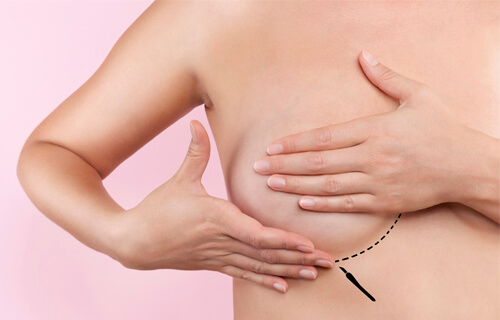Breast reduction surgery, also known as reduction mammoplasty, restores the breast to be proportional to a woman’s body by removing extra breast tissue and fat. This surgery not only reduces the size of the breast; it also helps to enhance the patient’s self-esteem and quality of life. Women with overly large breasts often live with pain in the back, breast, neck and shoulder. They may experience headaches as well as rashes under the breast. Surgery is often sought after other remedies, such as weight reduction, physical therapy and occupational therapy, haven’t produced results.
There are different options for achieving breast reduction. The most common procedure requires three incisions, creating an inverted T: around the areola, vertically from the areola to bottom of the breast, and horizontally across the bottom of the breast.
Most breast reduction procedures do not require removal of the nipple, but the nipple is reduced in size and moved higher on the breast. In the case of a very large breast, a patient may need a free nipple graft, which removes and repositions the nipple. There are some challenges related to the free nipple graft, including loss of sensation and the inability to breastfeed, but this procedure offers more predictable healing and improved appearance.
Am I a good candidate for breast reduction surgery?
Ideal candidates for breast reduction surgery will have realistic expectations of what a breast reduction surgery can achieve. The goal is to restore balance and help patients perform daily activities without obstacles.
For all elective surgeries, we recommend that patients:
- Are aware of the known negative effects of any surgery, including pain, cost, recovery time and scarring.
- Are physically and emotional healthy. Surgery creates physical trauma, so it is important to be in good health before the procedure to ensure strong healing.
- Patients should have support systems in place at home and at work.
- Are non-smokers, as nicotine delays the healing process.
Additionally, for breast reduction procedures, we recommend that patients:
- Be at or near their ideal body weight
- Will tolerate scars on the breast
- Understand the risk of decreased or altered sensation to the nipple and difficulty with breastfeeding




